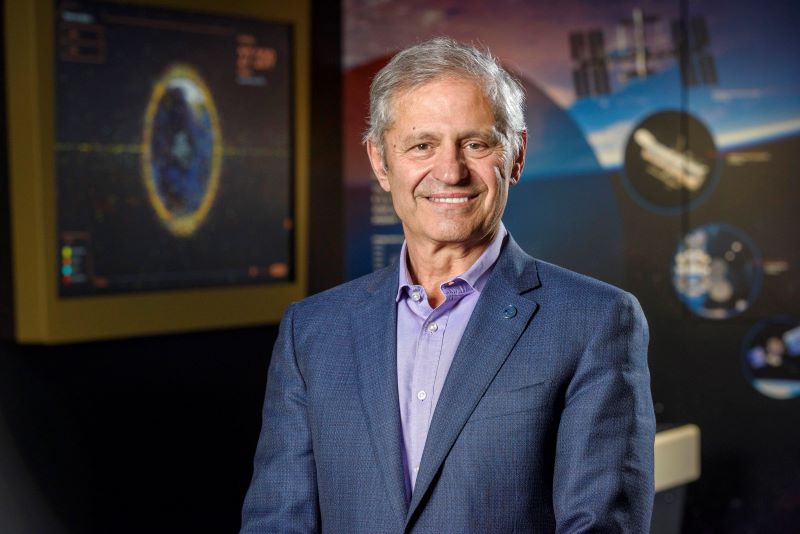In an election dominated by pressing issues like housing, the cost of living, energy transition, Medicare and jobs, it may seem counterintuitive to prioritise space. But if we are serious about securing Australia’s future prosperity, national security, and global relevance, investing in space is not just important – it is essential.
Australia stands on a burning platform. In a world increasingly shaped by geopolitical instability, cyber threats, contested space domains and fragile supply chains, our dependence on foreign satellite infrastructure leaves us dangerously exposed.
Every day, we rely on satellites for defence, weather forecasting, emergency management, agriculture, transport, communications, and national infrastructure yet we don’t own or control much of this capability.
And with our vast maritime border, small population and large landmass, Australia has one of the most compelling cases globally for investing in sovereign space assets.

As great powers weaponise space, trade wars intensify and global tensions escalate, we risk being blind, deaf and defenceless in a modern theatre of power.
Consider the recent unannounced foreign military exercises off our coast detected not by satellites, but by commercial aircraft. This is a wake-up call. This is not a future we can afford. Sovereign space capability is not a luxury, it is a strategic imperative.
A robust, domestic satellite industry is not just about resilience, security and independence. It is also a powerful engine for innovation, economic growth and high-value job creation.
It is also the key to positioning Australia as a respected global player in a sector projected to be worth US $1.8 trillion by 2035. From smarter agriculture to bushfire monitoring and defence, the benefits of space technology already underpin vital services in both the public and private sectors. The potential is enormous, but only if we act decisively.
Australia has made commendable strides in building space capabilities, particularly in small satellite technologies and space launches. But without a coordinated national approach, we remain fragmented. Our scale, supply chain limitations and capital constraints mean we risk stalling before we reach critical momentum.
Without strategic investment and bipartisan political commitment, we will continue to underperform and become a second-tier participant in one of the world’s most transformative industries.
Already, over 170 Australian government programs rely on earth observation data. From the Digital Earth Australia (DEA) Hotspots system detecting and tracking bushfires to startups using satellite imagery to optimise agriculture and protect water systems, our national resilience depends on access to timely, reliable, sovereign data.
Australia also has extraordinary geographic and diplomatic advantages. We have long been a trusted partner to the US Space Agency, NASA, and host more of their tracking stations than any other nation outside the US. But to go from reliable partner to global leader, we must now think and act strategically. Our space ambitions need to be bold, coordinated, and future-focused.
So, what should we be asking of our next government when it comes to space?
- A commitment to bipartisan support
Space must not become a partisan issue. It underpins defence, disaster management, agriculture, and economic resilience. The Space Industry Association of Australia has rightly called for all sides of politics to adopt a more ambitious, proactive approach.
We need long-term policy stability and cross-party support to unlock the sector’s full potential. Investment in space centres on the shared values of technological innovation for industrial transformation and economic resilience.
- A smarter approach to funding
This isn’t about throwing more money at the problem – it’s about making smarter, more impactful investments for our nation.
As Sally-Ann Williams, CEO, Cicada Innovations, has noted recently, targeted R&D funding and early-stage procurement can “bridge the funding gap between R&D grants and venture capital investment”.
Deep tech startups often fall into a “valley of death” between research and venture capital. Strategic government support can change that.
- An aspiration to lead globally
Australia has the talent, the partnerships, and the infrastructure to lead, not just follow. But we need to invest in sovereign capability.
The recent dependence on Starlink usage and availability in the Ukraine war illustrates the inherent risks of relying on foreign providers for critical infrastructure. Australia must never be left in such a vulnerable position.
- A plan to grow our space workforce
We must build a skilled, sovereign workforce from primary school to postdoc. If we fail to connect passion with opportunity, we’ll continue losing talent to overseas markets.
Success stories like the SA Government-funded Kanyini satellite mission are already proving that local investment creates real jobs, real capability and real futures.
- Support for university–industry–government collaboration
Space innovation thrives in ecosystems. SmartSat’s collaborative model has shown how strategic national government investment can unlock the power of partnerships.
Government must play a more active and informed role as an early customer of Australian technologies, helping turn IP into impact before it’s bought back at a premium from overseas.
Space is Australia’s next great nation-building opportunity. It touches everything from climate resilience and food security to defence, connectivity and economic growth. It is not a fringe issue – it is a foundation for national strength.
All Australians and all our political leaders should recognise the strategic importance of sovereign space capability and ensure we maintain assured access to space services. We have a clear choice: lead in shaping the future, or be shaped by our reliance on others.
Professor Andy Koronios is the CEO and managing director of the SmartSat CRC.
Do you know more? Contact James Riley via Email.
